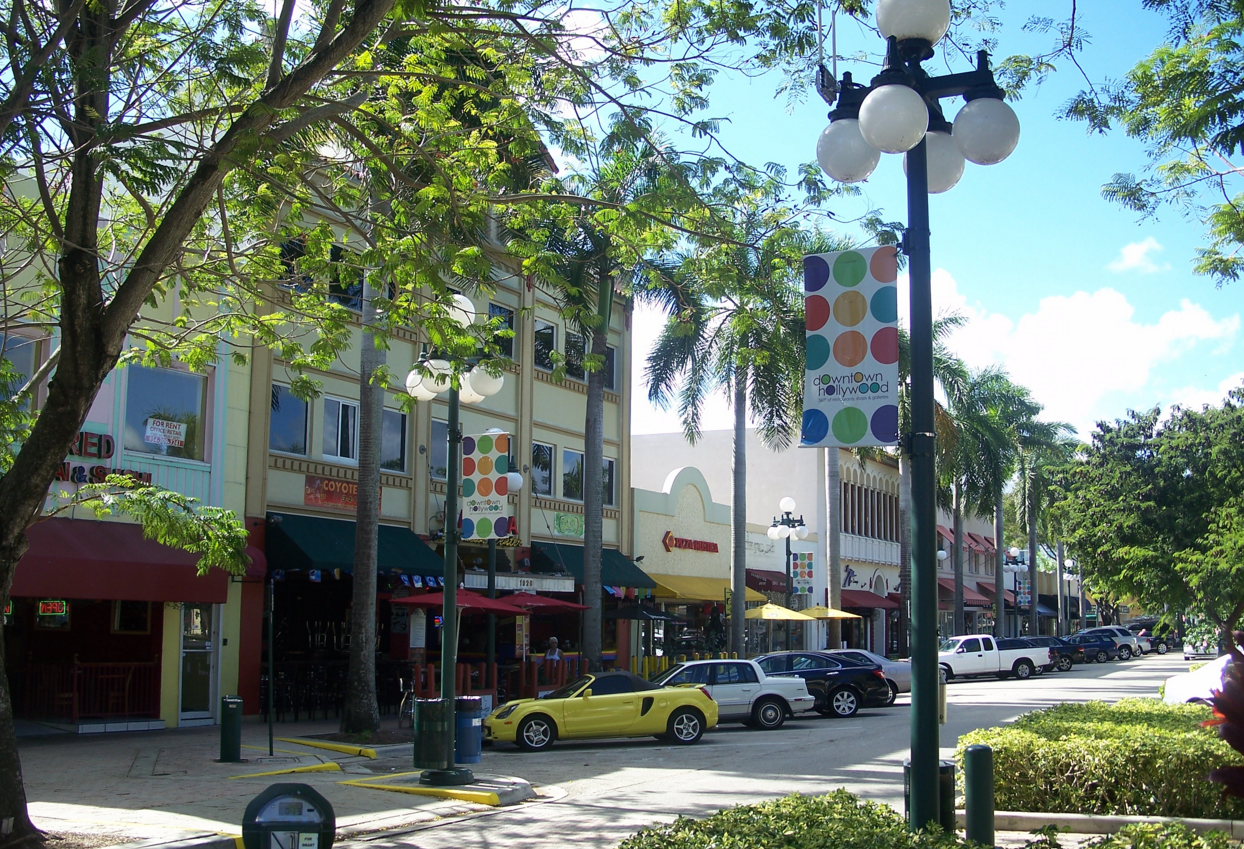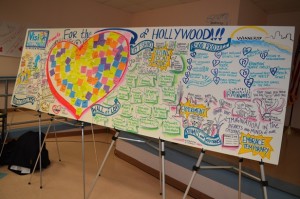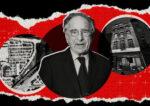Trending
Vision Hollywood 2020: branding the Broward city

Hollywood wants to create a city brand and promote itself — with input from residents.
Peter Kageyama, St. Petersburg-based author of the book “For the Love of Cities” and civic pride evangelist, took his message about the importance of building a city brand to the residents of Hollywood on Monday evening, where nearly two dozen new condo towers are planned.
There was a carnival-like atmosphere in the room as Kageyama talked about generating attention to a city’s uniqueness. Residents have a relationship with their city, one that needs to be nurtured by providing amenities, like parks, recreation and sidewalk cafes, but also by creating a sense of place, he told the audience. One of his missions for the evening was to get Hollywood residents in touch with what they value about their city and then use those qualities to promote it.
During the “visioning session,” Kageyama told his audience of about 250 city residents about campaigns throughout the United States and the world that have been successful in energizing the population and luring visitors to locales from North Carolina to Taiwan.
But not everyone in the audience was buying Kageyama’s message. Some nay-sayers expressed their disappointment that more serious topics were not addressed. But Kageyama was not deterred, asking his audience, most of whom wanted to join in the fun, “How many people love your city?”

Idea board for Hollywood vision event
Illustrating his point about generating goodwill and loyalty to a city, Kageyama showed his audience photos of a “wedding ceremony” held in Durham, North Carolina, in which 1600 brides and grooms pledged their love and fealty to their city, rather than a human spouse. And he also told the story of The Blobfest in Phoenixville, Pennsylvania — a three-day family-oriented event featuring the 1958 movie The Blob, which was made in and around Phoenixville. The Colonial Theater, where the festival is held each July, was also featured in this horror movie/cult classic. The event features, not only showings of the film, but a night in which audience members are invited to run out of the theater screaming, just as teen movie-goers did in the film when they “were menaced” by the on-screen blob.
These two events are good examples of how to inspire “love” of place in city residents, Kageyama said.
He also talked about the value of a t-shirt campaign. In Joplin, Missouri, for example, after massive damage inflicted on the city by a tornado a few years ago, a “Restore Joplin” t-shirt inspired hope in the local population, he said. A t-shirt created in Alaska, where wearing just a t-shirt could be life-threatening, carried the message “Anchorage: Alaska with Plumbing,” showing off the city’s sense of humor.
The evening was topped off with a contest to choose the best idea to promote the city of Hollywood. The reward was a prize of $500 to implement it. Many of the residents sat at 15 tables, each composing a team, which competed against each other to come up the best, low-cost idea. The winner of the contest was a “Beach to Neighborhood” concept involving glow-in-the dark spray-painted “sea life” that will adorn people’s homes and businesses, with the permission of the owners. The drawings, depicting fish and other sea creatures, such as turtles, will give “people in the community an opportunity to bring the ocean to your neighborhood,” said Kyle Harris, a resident and team member who came up with the idea. The next day, eager to begin, she contacted city hall to find out how her team could collect the prize and begin its work.




